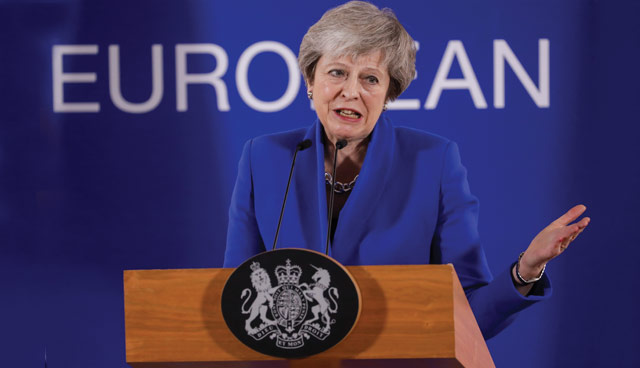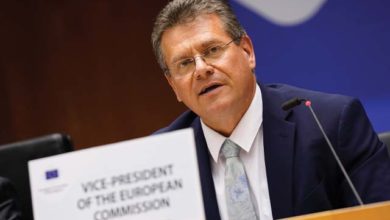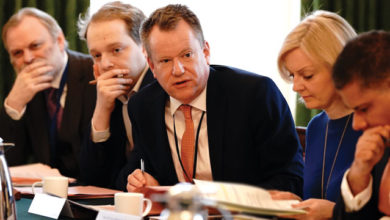Northern Ireland and the withdrawal agreement

Queen’s University Belfast’s David Phinnemore and Katy Hayward analyse the ‘Protocol on Ireland/Northern Ireland’ within the withdrawal agreement, the purported cause of the cabinet resignations and no confidence letters that troubled Theresa May in the wake of its publication.
Encompassing 29 pages within a weighty text of 585 pages, the Protocol and its 10 associated annexes contain the essence and detail of the ‘backstop’ provisions. Controversial for some, welcomed by others, this backstop, if triggered at the end of the transition period, will be the means by which a hard border on the island of Ireland is avoided.
Much of the controversy around the backstop assumes that it will be the final landing zone of the UK-EU relationship. But the withdrawal agreement is very clear: the EU and the UK will ‘use their best endeavours’ (Protocol, Article 2(1)) to find agreement by the end of 2020 that avoids the need to trigger the Protocol.
Moreover, even if it comes into play, the Protocol is ‘intended to apply only temporarily’ and thus only ‘unless and until [its provisions] are superseded, in whole or in part, by a subsequent agreement’ (Protocol, Article 1(4)).
Testament to the negotiating line of the UK in the past eight months is the fact that the Protocol is significantly different to its previous version in March 2018. Most notably, it contains an all-UK customs arrangement, as well as the scope for Northern Ireland to be accorded special treatment by the EU.
Meeting the commitments made in the Joint Report of December 2017, the purpose of the backstop, unless and until a future UK-EU agreement manages to do so, is stated to be: to address the unique circumstances on the island of Ireland, maintain the necessary conditions for continued north-south cooperation, avoid a hard border and protect the 1998 [Good Friday or Belfast] Agreement in all its dimensions (Protocol, Article 1(3)).
Rather than paring back these commitments, the UK appears to have added to them in the course of the past few months. This is evident in the new additions to Article 1 of the Protocol:
- This Protocol is without prejudice to the provisions of the 1998 Agreement regarding the constitutional status of Northern Ireland and the principle of consent, which provides that any change in that status can only be made with the consent of a majority of its people.
- This Protocol respects the essential State functions and territorial integrity of the United Kingdom.
Mention of the principle of consent and of the ‘territorial integrity’ of the UK here hold little legal sway – their legal basis is in UK legislation – but they are enormously important principles for unionists in Northern Ireland and elsewhere.
Their inclusion so prominently in the Protocol reflects an attempt to ameliorate the concerns of the Democratic Unionist Party, which has supported May under the confidence and supply arrangement.
Further addressing unionist concerns is the fact that the Protocol now not only seeks to avoid a hard land border between Northern Ireland and Ireland but also any hardening of the one between Great Britain and Northern Ireland.
Inevitably this entails maintaining close ties between the UK and the EU. And it is in how to achieve this that the controversy lies for May. What has provoked the ire of many Brexiteers is that, if it is used, the backstop will see the UK as a whole in a ‘bare bones’ customs union with the EU. May has insisted on this so as to avoid the need for customs checks on the Irish border or within the UK.
In order to meet the challenge of keeping the Irish border as open as possible, the Protocol contains particular provisions relating to Northern Ireland which would effectively see it remain in ‘the’ EU customs union. It also contains provisions for maintaining a level of regulatory alignment between Northern Ireland and the EU necessary to maintain the free movement of goods across the Irish border.
This includes staying aligned with EU VAT rules in respect of goods, and in relation to agricultural and fisheries products, and maintaining the Sanitary and Phytosanitary regime on the island of Ireland.
All this was originally envisaged in the first draft of the Protocol. What has been added since March 2018 is the detail, through previously unpublished annexes, of the range of regulatory alignment. But, as required to protect the 1998 Good Friday (Belfast) Agreement, the scope of the Protocol extends beyond trade. This is where we also see continuity from the previous drafts of the withdrawal agreement.
Connectivity
It includes provisions on the rights of individuals (where there is to be no diminution of the rights set out in the 1998 Agreement); bilateral UK-Ireland arrangements as part of the Common Travel Area; state aid and competition rules; arrangements for maintaining the single electricity market and other areas of north-south cooperation.
There are also new bodies proposed to oversee this, including a dedicated mechanism to ensure no diminution of rights in Northern Ireland, and a ‘Joint Consultative Working Group’ comprising UK and EU representatives.
It will meet at least monthly to exchange information, notably on relevant EU policy and legislative proposals in areas covered by the Protocol. This will be a form of dedicated decision-shaping. Plus, as originally envisaged, there will be a Specialised Committee with overall responsibility for the implementation of the Protocol. Its work will begin as soon as the UK exits the EU.
Also new are the means by which the implementation, application, supervision and enforcement of EU law will be handled. In previous drafts, this was to be the responsibility of EU institutions and bodies. Now there is to be a role for the UK authorities in the implementation and application processes. Practical arrangements are to be determined by the UK-EU Joint Committee overseeing the implementation of the whole withdrawal agreement.
For the interpretation of EU law under the Protocol, the responsible institution will be the Court of Justice of the EU. For other areas, it will be the dispute-settlement mechanisms for the withdrawal agreement generally.
Finally, the Protocol is more expansive on how the backstop arrangements can be ended. The Protocol will apply from the end of the transition period – possibly extended – unless an adequate agreement on UK-EU relations is ready to implement.
Once in play, the backstop cannot be unilaterally ended. Instead a dedicated review mechanism will be available to allow consideration of whether the Protocol “is, in whole or in part, no longer necessary to achieve the objectives” of enabling continued north-south cooperation, avoiding a hard border and protecting the 1998 Agreement in all its dimensions.
Any decision that all or part of the Protocol shall cease to apply will be taken by “mutual consent” of the UK and the EU in the Joint Committee responsible for the implementation of application of the withdrawal agreement.
The Joint Committee may ‘seek an opinion from institutions created by the 1998 Agreement’. Conceived to protect these institutions – the future operation of the Protocol may therefore yet end up being shaped by them.
Dr Katy Hayward is a reader in Sociology at Queen’s University Belfast and David Phinnemore is professor of European politics at Queen’s University Belfast.





